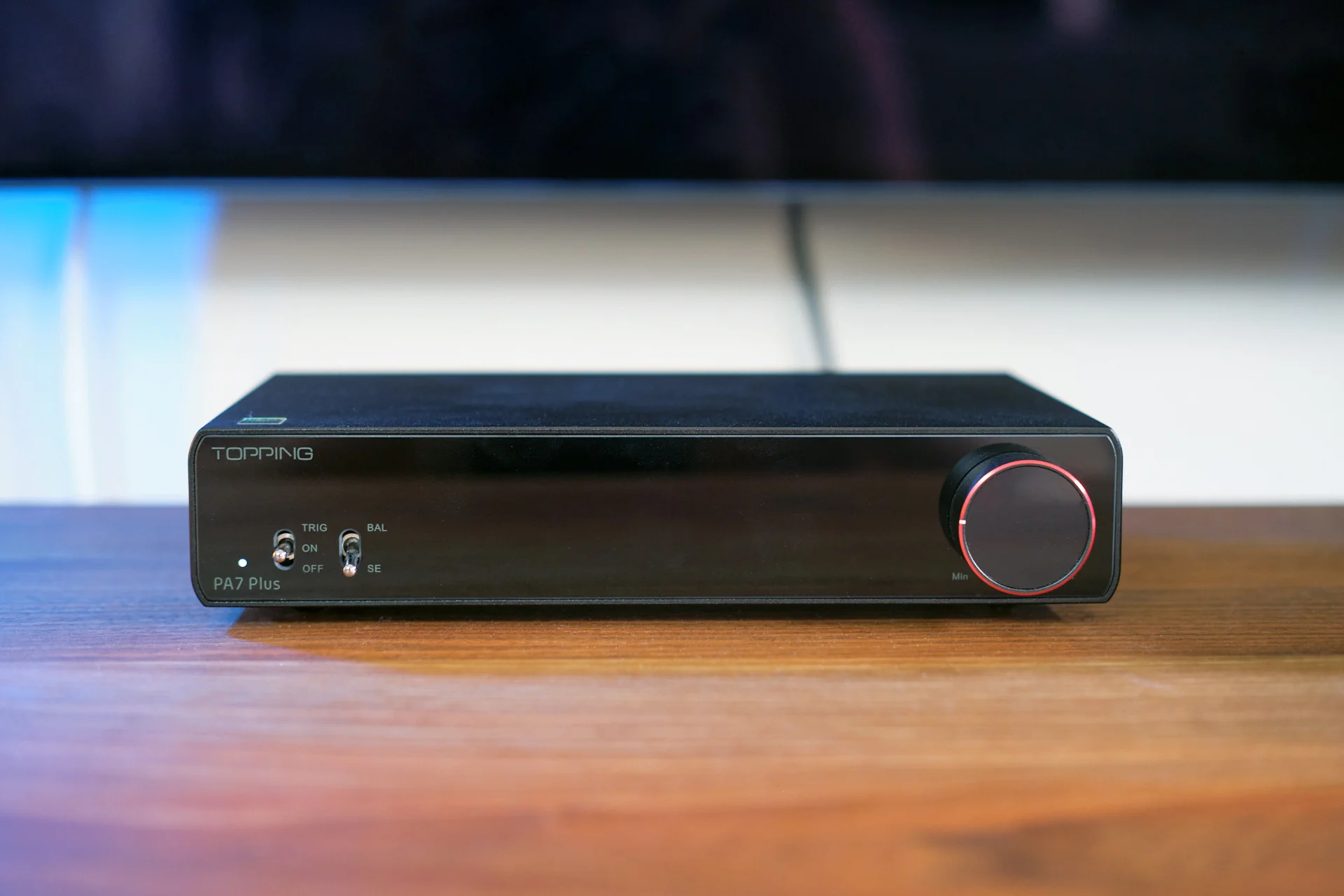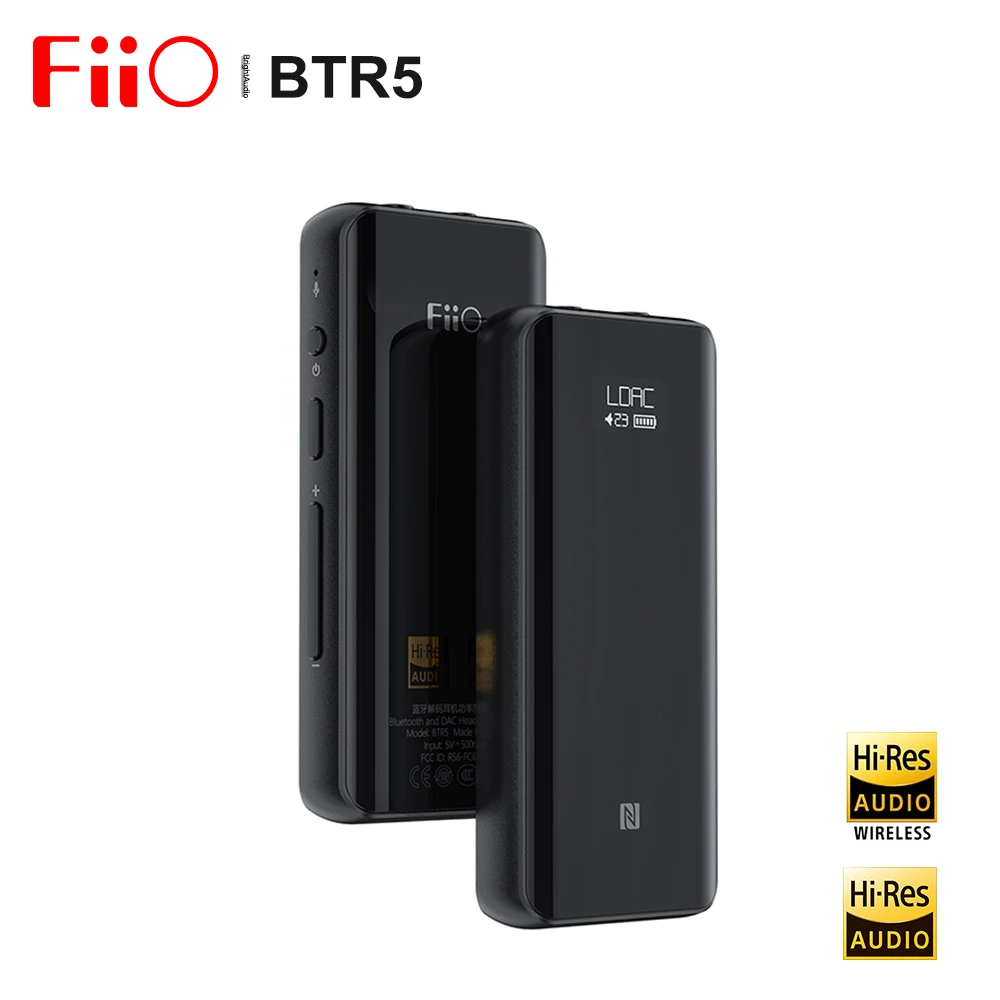Topping PA7 Plus is a very compact speaker amplifier with sonic performance that goes beyond its modest appearance. If you can get over a few of its quirks and missing features, it may as well be a best-buy product that you should pay very close attention to.
Build and Features
Topping PA7 Plus is probably one of the most simplistic integrated amplifiers you’ll encounter on the market. Yes, Topping calls it a power amplifier but it does have volume attenuation and two sets of inputs, which makes it an integrated amp in my book. That said, even though it has a volume control, PA7 doesn’t offer a remote control. One set of inputs is balanced and in the form of a combined TRS/XLR jack that will happily accept any of these cables. Speaker cable binding posts are miniature. Those will accept traditional 4mm banana plugs, as well as smaller spades or bare wire that shouldn’t be much thicker than 1.5 mm2 (AWG 16), but I suppose you could fit 2.5 mm2 (AWG 14) if you’re willing to thin out the ends of the wires a bit. To make the amplifier itself this small, Topping decided to put the power supply out of the main unit and inside the fairly big power brick. This approach has both its pros and cons, but that talk would run too deep and technical for the purpose of this write-up.
The front panel is very simple with two switches and a volume knob. One of the switches is used to turn the unit on and off, while the other one is to select between the two analog inputs. Volume attenuation is done in a very traditional way by using an Alps potentiometer. That’s it, there are no bass or treble controls, digital inputs, subwoofer output, or any other extras. If that’s putting you down, then you should probably look into a different model, but if you’re still here then keep on reading cause there is a positive side to all this.
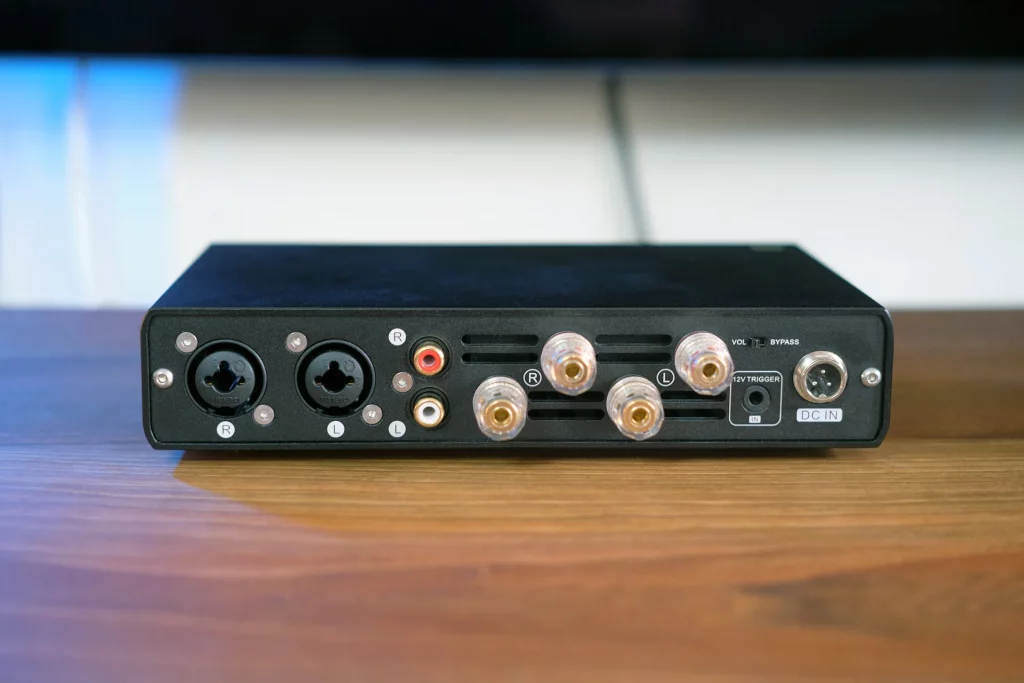
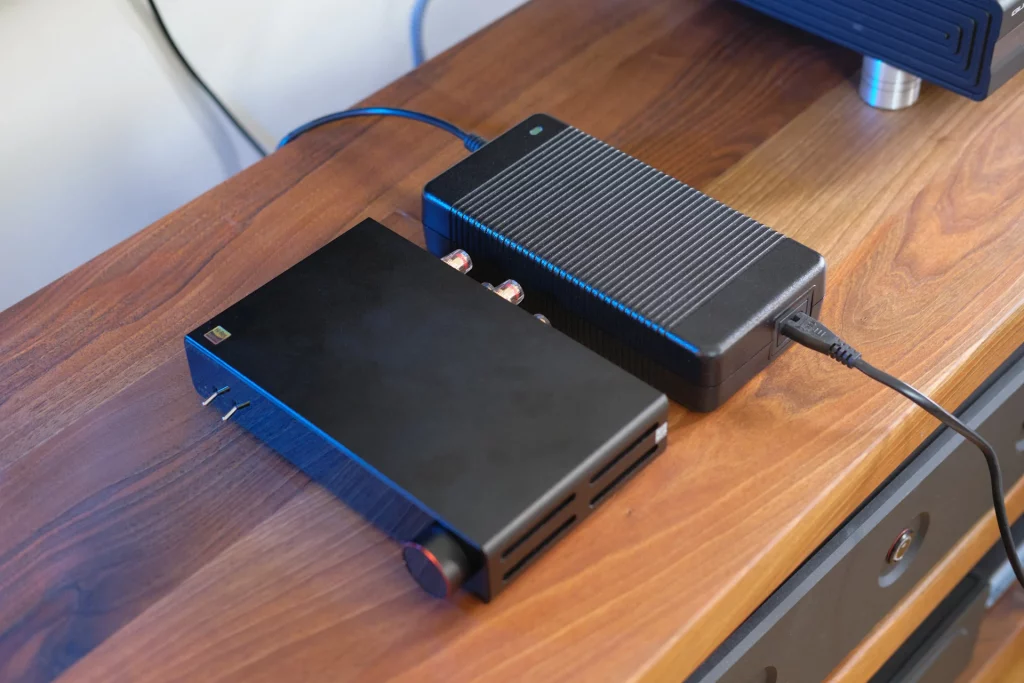
Tech Inside
If you were to open any of the online stores offering this amp, probably the first power rating you would see is 245 Watts. While not exactly a lie, this is a power that PA7 plus can give when connected to a 4 Ohm speaker and with a distortion of 1%. That is a much better and more honest way of specifying power compared to what they did for PA5 which was allowing for 10% distortion. So we can say that PA7 plus is truly capable of delivering high power. Before thinking this Topping is an insane powerhouse that can drive any load you throw at it with aplomb, have in mind that the power supply is limited at 6.5 Ampers. This means that loads with very low impedances, which can require high currents for uncompressed dynamics, still may pose a challenge.
Another part of the story is gain. I’m not sure if everybody knows this but gain is measured in decibels, and it tells you how much will the amp amplify the signal you feed it with. In the case of Topping PA7 Plus, we’re talking about the rather modest number of 19 dB. Now add to that the fact that the rated sensitivity of its analog inputs is 5 Volts (some DACs output 5V but most will provide 4V) and you’ll get to the conclusion that some pairing attention is needed to get the best out of this little guy. If possible, it is best to use sources with balanced outputs that can provide 5 V.
Sound
Topping PA7 Plus is a very respectable performer. It didn’t take much to notice how capable it is when it comes to detail retrieval. Tiny details in the recording are easily noticeable, for example, a singer taking a breath in front of the microphone, background percussions, etc. This character is equally present throughout the whole frequency spectrum. The bassline is disciplined, striking with intent, and never losing grip over a note. Move to the upper bass and nothing changes, it’s very tidy and nimble. Midrange simply continues similarly, offering clear and crisp edges. Instruments sound present and well defined, vocals too. High frequencies are truly well extended, providing plenty of brilliance and air, but never sounding oversharpened or edgy. On the contrary, PA7 Plus is one of the smoothest performers I’ve ever encountered anywhere near this price. Tones are very coherent and connected in an effortless, continuous fashion. Any sort of dryness or harshness that we could often observe with early class D designs is completely absent in this case. In fact, this kind of smoothness would put many class AB amps to shame.
Moving away from the tonality and to the soundstage, things are still great. Topping PA7 Plus develops a very spacious and airy soundstage. Instruments are well separated and masterfully layered, secured into their positions on the soundstage without ever overlapping and suffocating each other. The depth of the soundstage is very well presented, and if a recording was made inside of some sort of hall or church, you’ll hear those deep echoes quite nicely. While audiophiles with very capable amplifiers might feel that this should be a given, this quality is not that often achieved with gear of this price. Take any traditional, old brand amp of 400-600USD and you’re probably going to hear just a rough idea of the positioning inside of the soundstage, with instruments being hazy and not as nearly well defined and pinpointed. But I’ll talk more about it in the comparison section.
Finally, talking about dynamics and slam, a small PA7 doesn’t disappoint, it’s a fast-paced, lively-sounding amp for sure. The bassline is more on the nimble and fast side of things so sheer slam and punch are not the strongest suits of this amp. If you’re after explosive dynamics, as well as big and bold swings, better look for them somewhere else.
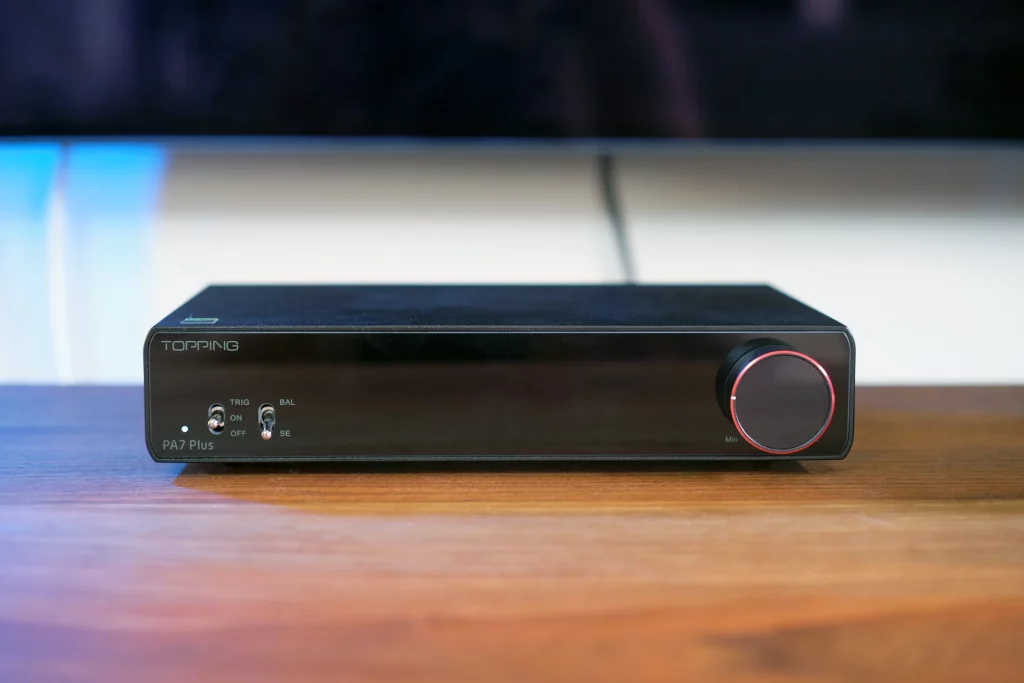
Comparisons
Topping PA5 is a more affordable model that was released earlier and is some two hundred dollars more affordable. Their form factor is the same, both are of a desktop size, have external power supplies, volume attenuation but no remotes. Sonic difference however is very obvious. PA5 sounded very revealing and clean, but thinner and colder, and it could be called analytical. PA7 Plus improves on that with much smoother and more natural tonality, but it doesn’t end there. Instead, there’s an uplift in the overall clarity, with a darker background and even cleaner tones. All said and done, even though PA5 was a very capable amplifier on its own, and I praised it the time, and even though PA7 Plus is pricier, I consider PA7 to be a better-sounding product and better value. It’s more than worth saving and spending some extra, in my opinion.
NAD D3020 V2 is now old product, but it is still selling for roughly the same price as this Topping. It packs an integrated DAC, phono input, sub-out, remote, and bass boost. So talking about features, NAD takes this fight easily. But when it comes to the sheer sound fidelity, Topping is in a league of its own. First of all, Topping’s tonality is much more neutral and uncolored. That is very noticeable because of the NAD’s overly warm and dark presentation. But tonality aside, PA7 Plus is a much more precise tool that follows rhythm on a dime and digs details that would simply melt and be lost with NAD. PA7 Plus is also capable of such fine layering and pinpointing of every instrument that NAD can’t even come close to arranging such a precise and deep soundstage. To put it simply, the feature-packed D3020 V2 sounds like a blunt tool next to a clean and refined PA7 Plus.
Hegel H90 is a much bigger amplifier with the whole digital section and a streamer of a high quilty. So here I’ll just focus on its analog amplification section for the sake of putting PA7’s performance into perspective. Now, have in mind that I didn’t compare these two amps directly next to each other, but a common reference in a familiar setup was used to access their performances. That said, these two amps are roughly on the same level. They both rock clean, smooth, and calm presentation, with the soundstage spreading deep behind the speakers. If anything, Topping is beating Hegel at its own game, offering even cleaner tones and a darker background, with an even better-controlled bassline.
Conclusion
Topping PA7 plus is a slightly weird small amplifier, that boasts an external power supply as big as the main unit itself. But the weirdest thing in my mind is the lack of a remote control, a decision that makes it desktop-friendly and living room unfriendly. For that one only, I would deduct a whole score from it if the big living room setup is what you need it for. On the other hand, if a nier-field desktop setup is its destination, or you want to use it attached to a device that has its own separate volume control – then the PA7 Plus is one mighty fine-sounding product and even better value.
I would love to see Topping making a proper integrated amplifier in the future, of a slightly bigger size, with binding posts that can accept normal-sized spades, and with a remote. I don’t know about you, but I would gladly pay a few hundred more for that device.
| TOPPING PA7 PLUS – CHARACTERISTICS |
|
Inputs: 1* Balanced stereo XLR/TRS combo Output power: Size: 200 x 145 x 41 mm |
